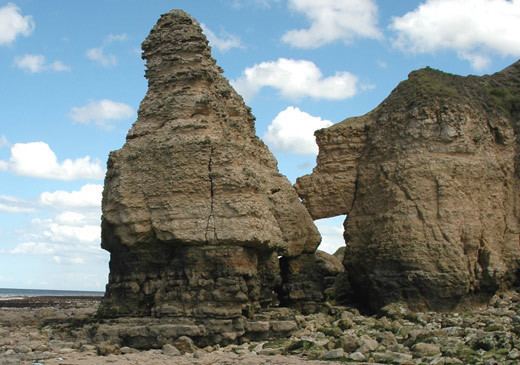 | ||
In the geologic timescale, the Bajocian is an age or stage in the Middle Jurassic. It lasted from approximately 170.3 Ma to around 168.3 Ma (million years ago). The Bajocian age succeeds the Aalenian age and precedes the Bathonian age.
Contents
Stratigraphic definitions
The Bajocian stage takes its name from the Latin name (Bajocae) of the town of Bayeux, in the region of Normandy in France. The stage was named and introduced in scientific literature by French palaeontologist Alcide d'Orbigny in 1842.
The base of the Bajocian stage is defined as the place in the stratigraphic column where fossils of the ammonite genus Hyperlioceras first appear. A global reference profile (a GSSP) for the base is located at Murtinheira, close to Cabo Mondego in Portugal. The top of the Bajocian (the base of the Bathonian) is at the first appearance of ammonite species Parkinsonia convergens.
Subdivision
The Bajocian is often divided into Lower/Early and Upper/Late subages or substages.
In the Tethys domain, the Bajocian contains seven ammonite biozones:
Dinosauria
Rhoetosaurus, Ozraptor, Yunnanosaurus, Cetiosauriscus, Xiaosaurus
